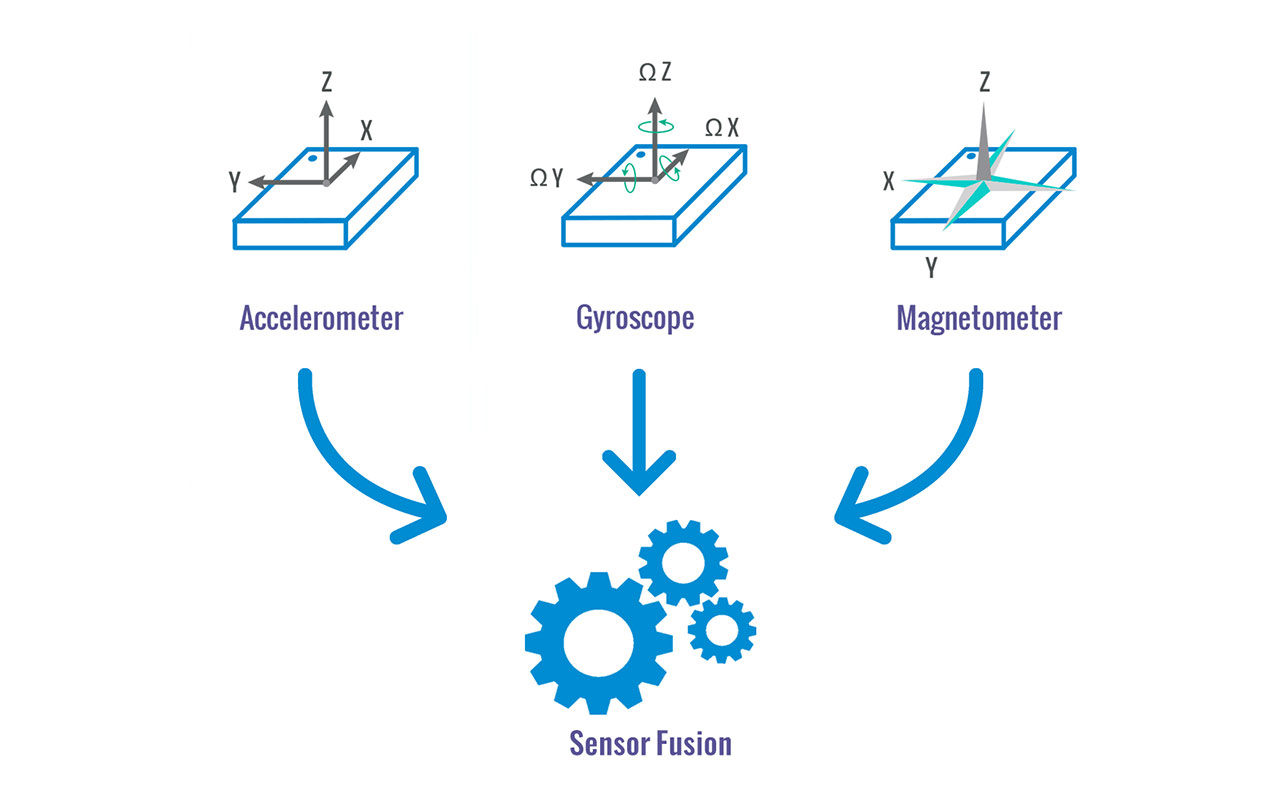- Solutions
- Products
- Resources
- Company
 Investor Relations
Investor RelationsFinancial Information
- Careers


Ceva-MotionEngine is Ceva’s core sensor processing software system and is the product of over 20 years of experience developing sensor-based technology and products. The software combines high-accuracy 6 and 9 axis IMU sensor fusion algorithms, dynamic sensor calibration and many applications specific features such as cursor control, gesture recognition, activity tracking, context awareness, and AR/VR stabilization.
Related Markets
The Solution
MotionEngine is a powerful, flexible software package that combines inputs from multiple sensors, from IMUs, environmental sensors, and UWB to wheel encoders and optical flow sensors, to provide calibrated sensor output, a range of rotation vectors, and application-specific classifiers, detectors, and other algorithms.
MotionEngine’s various dynamic calibration algorithms ensure continuously excellent in-field performance and consistency across products with less drift an often without the need for factory calibration. The software is sensor agnostic, freeing OEMs to make the most beneficial cost/performance tradeoffs without sacrificing a great experience. MotionEngine is available as an embedded library for Ceva DSPs, ARM and RISC-V MCUs, and for Android, Linux, Windows, macOS, and WebOS platforms. To accelerate your time to market, MotionEngine is available with sensor drivers and sensor communication packages, or even as a full chip executable.
Ceva-MotionEngine Software Packages:
MotionEngine SmartTV – Host-side software library that simplifies TV interfaces with cursor control, virtual controls, and gestures
MotionEngine Air – Embedded library that provides handheld remote controls and stylus pens with 3DoF cursor control, gestures, and events
MotionEngine Hex – Embedded and host-side software libraries that provide 6DoF cursor control, gestures, and events
MotionEngine Robotics – Delivers high accuracy, low-drift, multi-axis heading right out of the box for terrestrial robots, with the option to fuse SLAM and IMU for improved heading and position
MotionEngine Scout – High accuracy robotic dead reckoning that adds robustness to intelligent walk, VSLAM, and LIDAR based systems using cross calibration of wheel encoder, optical flow, and IMU sensors
Benefits
Built over 20 years, Ceva-MotionEngine software is a robust and highly-customizable sensor fusion solution for a broad range of motion applications. MotionEngine provides world-class precision and accuracy, enabling higher-level algorithms that bring intelligence to products and simplicity to users.
Specialized application algorithms include drift-free orientation detection for pixel-accurate in-air pointing; gesture recognition like twists, flicks, circles, and shakes; stabilization, head tracking, and autocentering for AR/VR devices and hearables; and dead-reconning navigation for robotics applications. Algorithms are customizable to specific customer requirements, and code size is compact, allowing use in even the smallest hardware configurations.
Key Features
- Deployed in over 400 million devices
- Sensor, processor, and OS independence
- Dynamic calibration to eliminate accelerometer and gyroscope drift
- Drivers and management code for a wide range of sensors
- Industry-proven sensor fusion algorithms give accurate, smooth orientation , heading, and tilt
- Compact code and memory size and availability for ARM and RISC-V MCUs and Ceva DSPs
- Algorithms to reject magnetic interference
- Application-directed algorithms for a wide variety of use cases including AR/VR headsets, pointing devices with sophisticated gesture recognition, medical devices, services on mobile devices such as mode detection and user activity detection, and navigation for robotics



